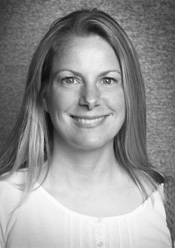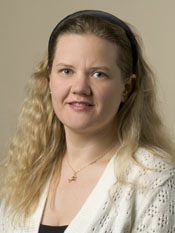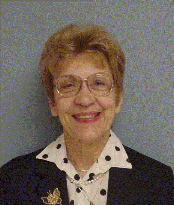Program Information
Session in Memory of Franca Kuchnir: Excellence in Medical Physics Residency Education

K Hendrickson
D Fontenla
W Parker
S Dieterich
K Hendrickson1*, D Fontenla2*, W Parker3*, S Dieterich4*, (1) University of Washington, Seattle, WA, (2) Memorial Sloan-Kettering Cancer Center, New York, NY, (3) McGill University Health Center, Montreal, QC, (4) UC Davis Medical Center, Sacramento, CA
Presentations
10:15 AM : Site-Specific Clinical Rotation: Into the Minds of the Radiation Oncologists - K Hendrickson, Presenting Author10:30 AM : Errors and Process Improvements in Radiation Therapy - D Fontenla, Presenting Author
10:45 AM : CAMPEP Residencies in a Canadian Context: Comprehensive Cancer Centers and Integrated Learning Environments - W Parker, Presenting Author
11:00 AM : Learning the Ropes: Clinical Immersion in the First Month of Residency - S Dieterich, Presenting Author
WE-D-204-0 (Wednesday, August 3, 2016) 10:15 AM - 11:15 AM Room: 204
Speakers in this session will present overview and details of a specific rotation or feature of their Medical Physics Residency Program that is particularly exceptional and noteworthy. The featured rotations include foundational topics executed with exceptional acumen and innovative educational rotations perhaps not commonly found in Medical Physics Residency Programs. A site-specific clinical rotation will be described, where the medical physics resident follows the physician and medical resident for two weeks into patient consultations, simulation sessions, target contouring sessions, planning meetings with dosimetry, patient follow up visits, and tumor boards, to gain insight into the thought processes of the radiation oncologist. An incident learning rotation will be described where the residents learns about and practices evaluating clinical errors and investigates process improvements for the clinic. The residency environment at a Canadian medical physics residency program will be described, where the training and interactions with radiation oncology residents is integrated. And the first month rotation will be described, where the medical physics resident rotates through the clinical areas including simulation, dosimetry, and treatment units, gaining an overview of the clinical flow and meeting all the clinical staff to begin the residency program. This session will be of particular interest to residency programs who are interested in adopting or adapting these curricular ideas into their programs and to residency candidates who want to learn about programs already employing innovative practices.
Learning Objectives:
1.To learn about exceptional and innovative clinical rotations or program features within existing Medical Physics Residency Programs.
2.To understand how to adopt/adapt innovative curricular designs into your own Medical Physics Residency Program, if appropriate.
Handouts
- 115-32237-394514-118777-131267656.pdf (K Hendrickson)
- 115-32238-394514-120248.pdf (D Fontenla)
- 115-32239-394514-120249.pdf (W Parker)
- 115-32240-394514-118722-429960423.pdf (S Dieterich)
Contact Email:





